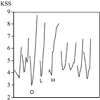Sleep Loss and Fatigue in Shift Work and Shift Work Disorder
- PMID: 20640236
- PMCID: PMC2904525
- DOI: 10.1016/j.jsmc.2009.03.001
Sleep Loss and Fatigue in Shift Work and Shift Work Disorder
Abstract
Shift work is highly prevalent in industrialized societies (>20%) but, when it includes night work, it has pronounced negative effects on sleep, subjective and physiological sleepiness, performance, accident risk, as well as on health outcomes such as cardiovascular disease and certain forms of cancer. The reason is the conflict between the day oriented circadian physiology and the requirement for work and sleep at the "wrong" biological time of day. Other factors that negatively impact work shift sleepiness and accident risk include long duration shifts greater than 12 hours and individual vulnerability for phase intolerance that may lead to a diagnosis of shift work disorder; i.e., those shift workers with the greatest sleepiness and performance impairment during the biological night and insomnia during the biological day. Whereas some countermeasures may be used to ameliorate the negative impact of shift work on nighttime sleepiness and daytime insomnia (combined countermeasures may be the best available), there seems at present to be no way to eliminate most of the negative effects of shift work on human physiology and cognition.
Figures




References
-
- Knutsson A. Health disorders of shift workers. Occup Med (Lond) 2003;53(2):103–108. - PubMed
-
- Knauth P. Categories and parameters of shiftwork systems. In: Colquhoun WP, Costa G, Folkard S, Knauth P, editors. Shiftwork: Problems and solutions. Frankfurt am Main: Peter Lang GmbH; 1996. pp. 17–28.
-
- Aanonsen A. Shift work and health. OSLO: Universitetsforlaget; 1964.
-
- Tune GS. A note on the sleep of shift workers. Ergonomics. 1968;11(2):183–184. - PubMed
-
- Andersen JE. Three-Shift Work. Copenhagen: Social forsknings instituet; 1970.
Grants and funding
LinkOut - more resources
Full Text Sources
Other Literature Sources

